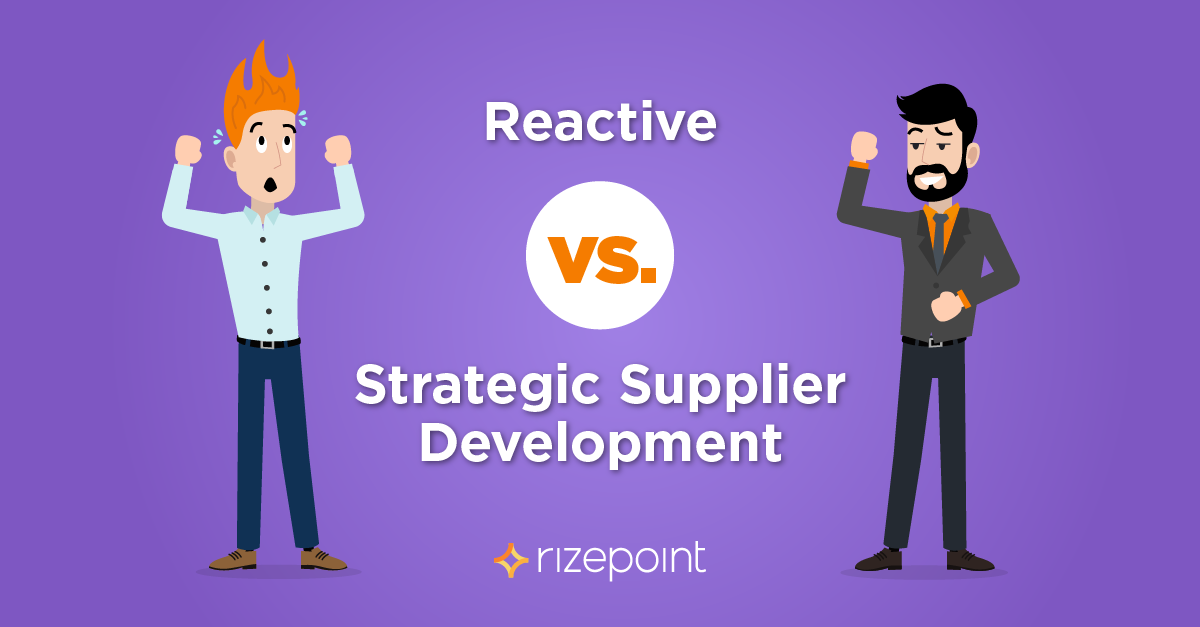A Balanced Approach to Improving Supplier Quality Programs
The success of your business depends on one degree or another on your suppliers, so it’s in your best interest to find the most effective way to develop these relationships. If your job involves supplier development, chances are you’re already familiar with reactive and strategic styles — as well as the notion that you should strive for the latter option. That may be easier said than done, as real-world operations don’t often unfold as expected. Read on to learn more about reactive and strategic supplier development styles, and see how a realistic mix of the two might just be your winning strategy.
Elements of Strategic Supplier Development
Your procurement division works hard to identify and engage the very best suppliers, but this relationship doesn’t end with a signed contract. Your suppliers are your business partners, particularly in the food and beverage industry, so you need to ensure you have a healthy working relationship. Enter strategic supplier development, a system that helps you collaborate with your suppliers to identify improvements, inspire peak performance, and ensure customers are receiving the very best goods and services.
Reactive Versus Strategic Styles
Supplier development tends to fall into two general styles: reactive and strategic. These styles refer to how you view issues in your supply chain, which in turn affects how you will make improvements. Here’s a broad overview of the two styles:
- Reactive. As the name suggests, a reactive approach focuses on fixing problems as they arise. You seek to repair existing problems on an ad-hoc basis, resulting in short-term improvements.
- Strategic. If you use this style, which is also sometimes called proactive supplier development, you employ a forward-thinking and holistic approach to supplier issues. You seek to identify where resources are best allocated, prioritize supplier buy-in and collaboration, and plan to achieve continuous and anticipatory improvements, which result in a long-term competitive advantage.
Importantly, your orientation dictates the steps you take toward developing your supply chain. Let’s look at an example, in which a customer calls to complain about late delivery.
A reactive approach might result in you reaching out to the supplier and responding to the negative customer feedback which, at best, will result in an improvement in the supplier’s delivery times in addition to a satisfied customer. At worst, it will reveal a chronic supplier problem and result in a lost customer. A strategic approach suggests that rather than focusing on the late delivery, you’ll look at the issue of delivery times in general and take proactive steps to improve, ensuring that services meet customer expectations going forward.
Striking the Right Balance
In the example above, it’s obvious that the reactive approach will have limited results, and over time these limitations will compound. A purely reactive style puts you at a competitive disadvantage and exposes you to organizational risks. That said, you have to contend with the realities of the business world, where an entirely strategic approach may not be practical or possible.
The best supplier development programs are the ones that work for a business, and that very well might involve a hybrid approach that values collaboration and planning but is also responsive to issues as they arise.
Returning to our example, let’s imagine a hybrid or integrated style. In this case, you would have already identified issues around late deliveries and conferenced with your suppliers, so you would already have an understanding of the systemic challenges causing late deliveries. You might have already used supplier feedback to change protocols, asked for additional budget to meet customer needs, or sent out a communication including updated expectations. All of these strategic actions would make the reactive action — reaching out to the supplier and the customer — clearer and more satisfying for all involved.
You rely on your suppliers, especially when something goes wrong. By using a hybrid reactive-strategic approach, you can plan for long-term improvements to gain a solid competitive advantage while reacting to issues in an immediate and nimble manner. In short, your strategic supplier development programs can make reactive situations easier and faster to resolve.
